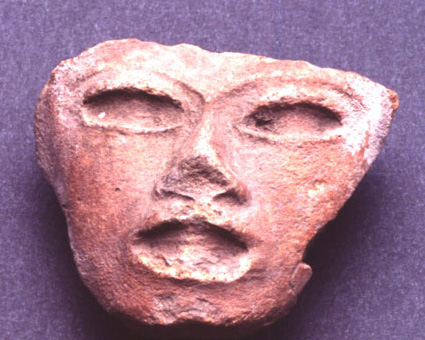
Click here to view image
Anthropomorphic head (part of a whole figurine), V - VI century A.D. (Teotihuacán III), Mexico
Terracotta

Click here to view image
Anthropomorphic head (part of a whole figurine), V - VI century A.D. (Teotihuacán III), Mexico
Terracotta


Click here to view image
Anthropomorphic head (part of a whole figurine), III - IV century A.D. (Teotihuacán II), Mexico
Terracotta

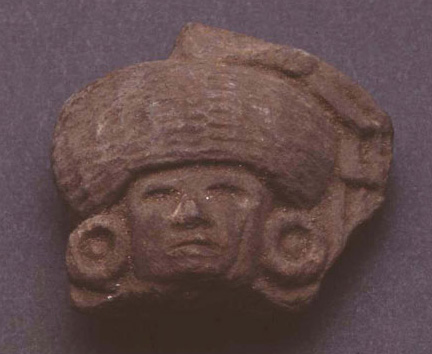
Click here to view image
Anthropomorphic head, 7th century A.D. (Teotihuacán IV), Mexico
Unità di misura: cm
Altezza: 5
Larghezza: 5.5
Messico
Terracotta
Anthropomorphic head with turban headgear with engraved decoration, large ear discs (part of a whole figurine)

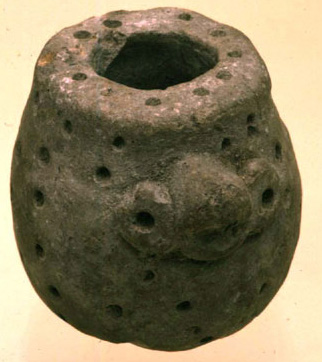
Click here to view image
Candelero, I - VII sec. A.D, Mexico
Terracotta
Candelero (incense burner for burning the Copal, yellow or reddish resin) with cylindrical vertical stove with decoration of small holes

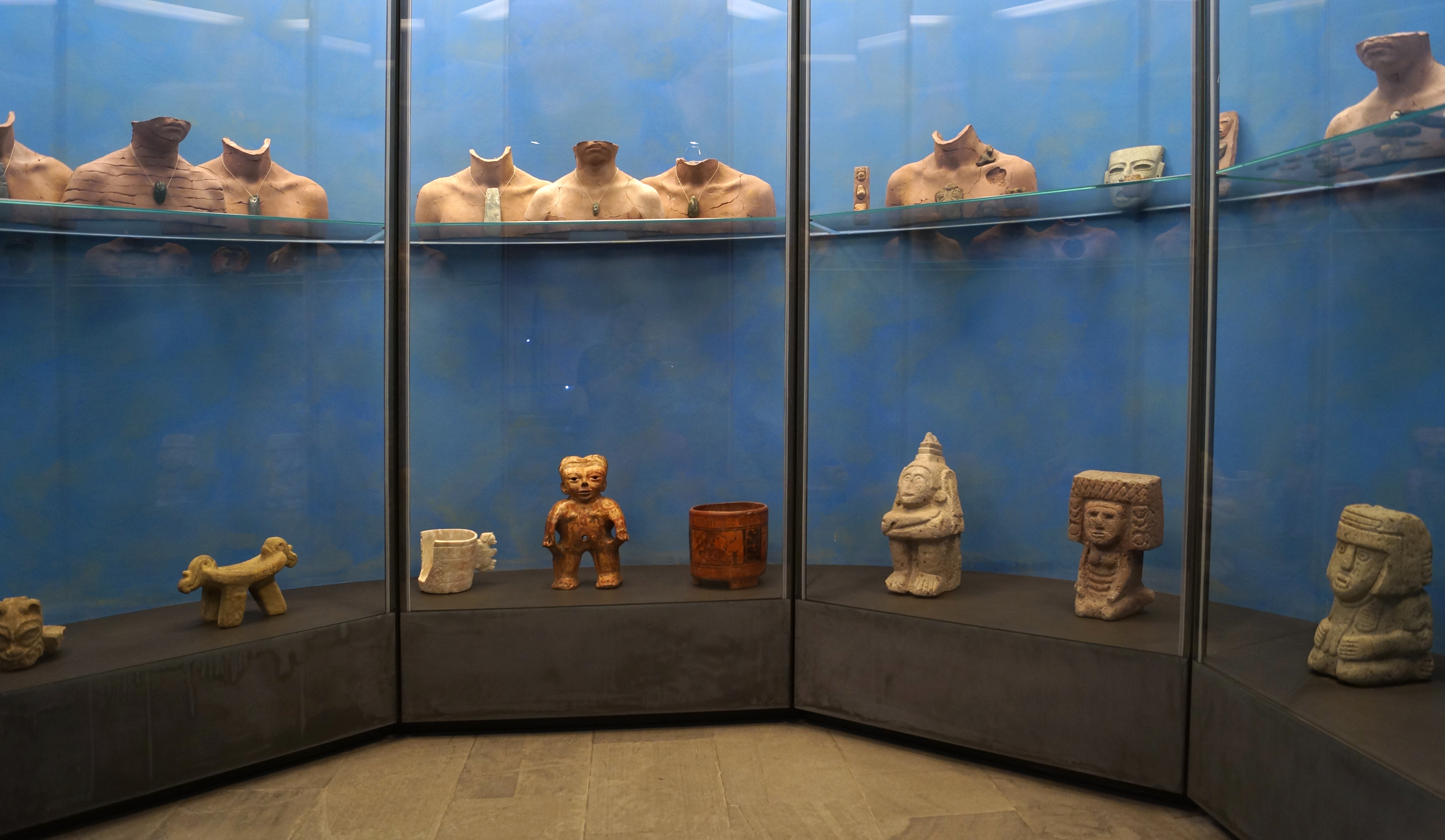
Click here to view image
Installation of the Mesoamerican area

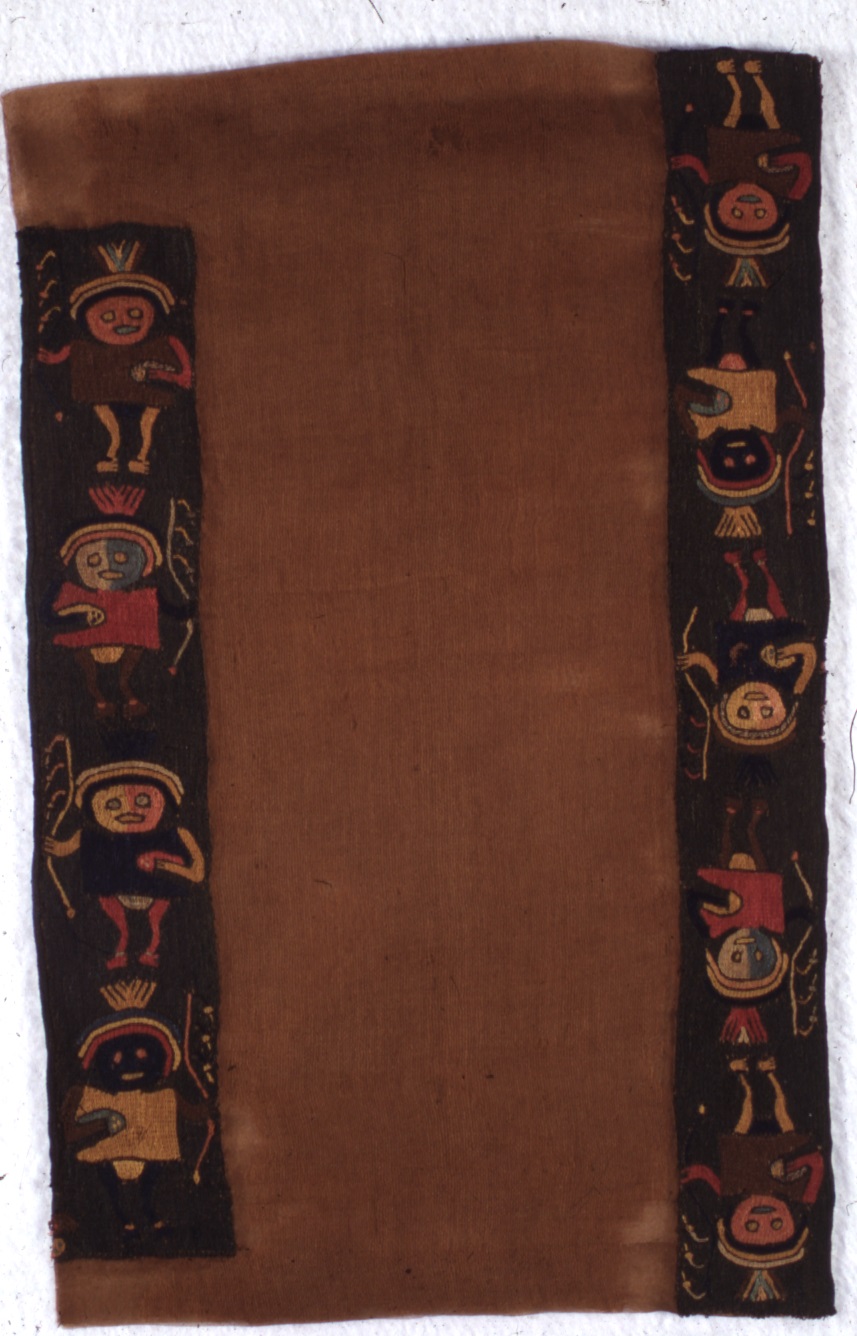
Click here to view image
Three fragments of fabric
Schmidt y Pizarro 1938 acquisto
Paracas
Three fragments of fabric
Fabric fragment
XII-III b.C. - 1100 b.C. - 201 b.C.
Unità di misura: cm; Larghezza: 23.7; Lunghezza: 37.2; Unità di misura: cm; Larghezza: 11.8; Lunghezza: 22; Unità di misura: cm; Larghezza: 5.5; Lunghezza: 21.5
Perù
cotone naturale e fibra camelide, tela bilanciata e punto erba
Le mani delle americhe - Laboratorio didattico S. Agostino, Genova - nov-gen. 1995/96
Three fragments probably belonging to the same natural cotton balanced canvas textile. The stem stitch made in natural cotton and camelid fibers designs male characters with bows, crescent-shaped headdresses, feathers and tunics with monochrome and bichrome faces on a bottle green background. The colors used are moss green, yellow, blue, brown, pink, red, light blue. The textile is not double-sided.

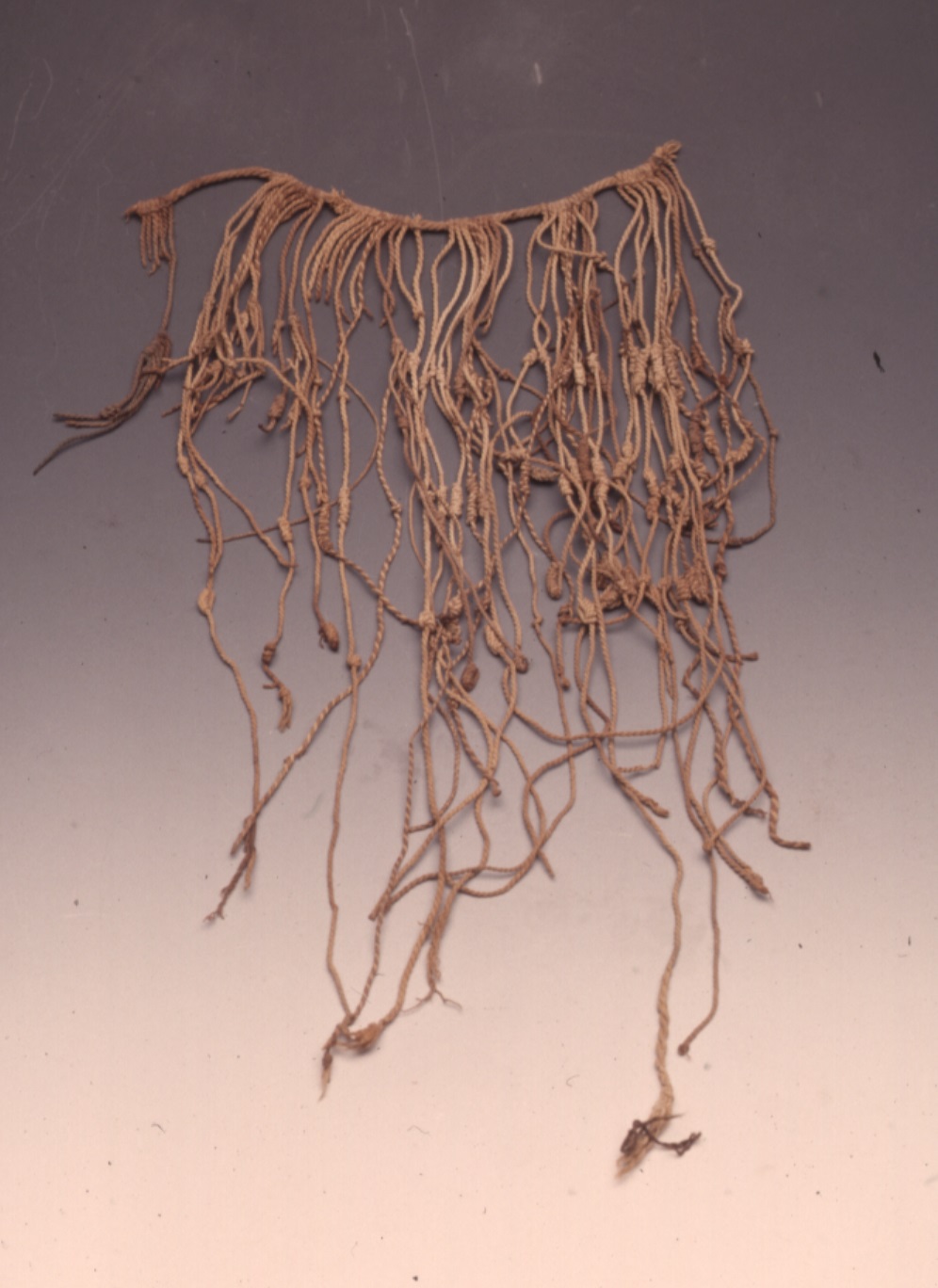
Click here to view image
Quipu
Quipu (system of cords with nodes that served for the calculation of objects, goods and to censure the population in the Inca empire)
Natural cotton, crowning, knotting, funeral goods
C.I.C. 107, Donation M. Marini Montesoro, 1957

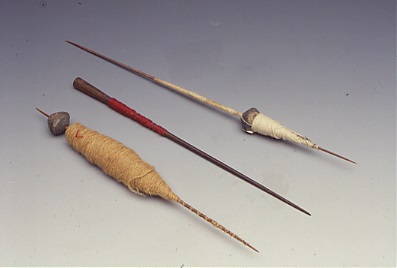
Click here to view image
Spindles
three spindles for spinning with thread, two of which with engraved terracotta spindle
Carved wood, cane and terracotta, funerary equipment
C.I.C. 29-30, Donation M. Marini Montesoro, 1957

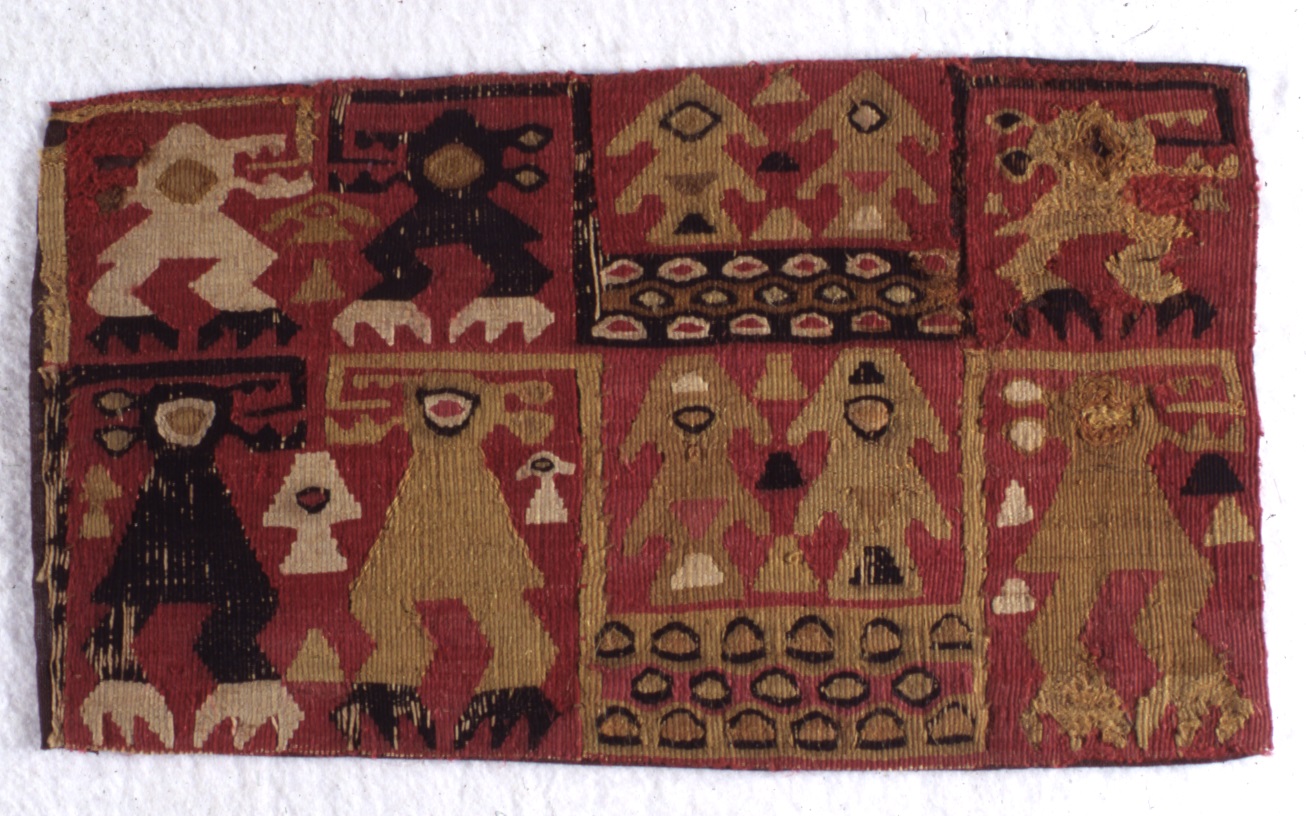
Click here to view image
Fabric fragment
Schmidt y Pizarro 1933 acquisto
Nazca
Fabric fragment
Fabric fragment
V-IX
Unità di misura: cm; Altezza: 15.3; Lunghezza: 28
Perù
cotone naturale e fibra camelide, punto ad arazzo
Le mani delle americhe - Genova, Laboratorio didattico Sant'Agostino - Nov. 1995 - Gen. 1996<br>Mostra d'arte precolombiana e di etnologia americana - Genova, Castello D'Albertis - 1972-1977
Rectangular fragment of tapestry stitch fabric. Warp in natural cotton and wefts in natural cotton and camelid fiber in yellow, light and dark brown, red/pink (background) which draw ornithomorphic figures in profile and stylized rays coupled on two superimposed registers. Separations sewn with natural cotton thread. The textile is double-faced.

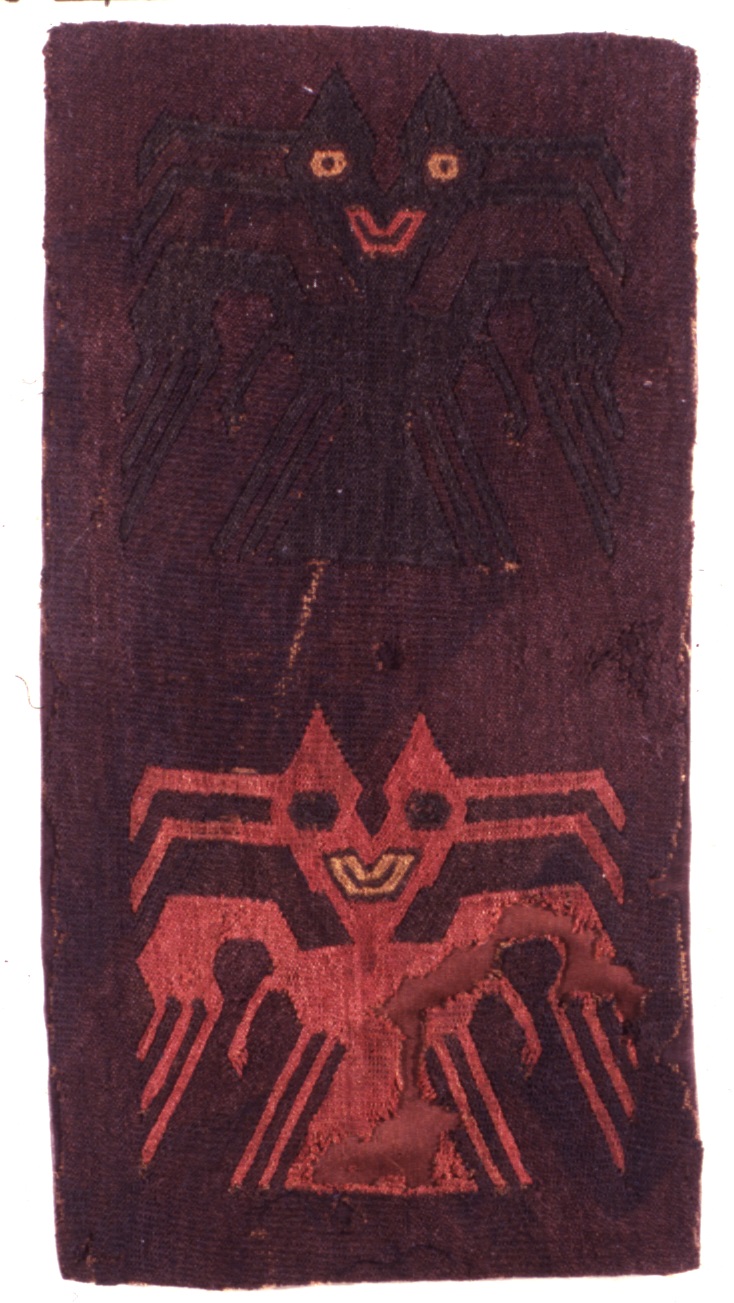
Click here to view image
Fabric fragment
Schimdt Y Pizarro 1938 acquisto
Paracas Necropolis
Fabric fragment
Fabric fragment
V-II b.C. - 500 b.C. - 101 b.C.
Unità di misura: cm; Altezza: 29.5; Lunghezza: 15
Perù
cotone naturale e fibra camelide, tela bilanciata e punto erba
Le mani delle Americhe - Genova, Laboratorio didattico Sant'Agostino - Nov. 1995 - Gen. 1996<br>Mostra d’Arte Precolombiana e di Etnologia Americana, Genova - Genova, Castello D'Albertis - 1972-1977
Textile art is an extremely important medium among Andean cultural manifestations. The burials found on the southern desert coasts of Peru and northern Chile present funerary offerings in organic materials, including grave goods with weaving tools and fabrics with bright colors and extremely varied technical and iconographic solutions, in which the deceased is wrapped and accompanied in the afterlife.
The oldest needle-woven textile finds made of plant fibers found testify that the Andean populations had knowledge of spinning and weaving since 8.000 BC. Rectangular fragment of Paracas fabric made of natural cotton with balanced linen, part of a funerary item. The diagonal stem-stitch embroidery, in camelid fiber on a dark brown background, depicts two overlapping bat demons in flight. The figures are made one in red and the other in black-green, with eyes and mouth embroidered with yellow and red thread. The fabric is not double-sided.




Headquarters:
Municipality of Genoa - Palazzo Tursi
Via Garibaldi 9 - 16124 Genoa
C.F / VAT 00856920102